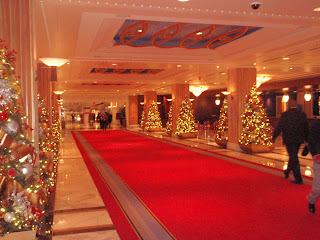Are tiny plastic toiletries bottles on their way out of hotels?
By Barbara De Lollis
I found regular-sized shampoo, conditioner and lotion bottles during my stay at the luxury Greenwich hotel in New York City earlier this summer. Then, while in Los Angeles I spotted them at both the SLS and Avalon hotels. Back in March, I found pump bottles at the business-traveler-oriented Mint Hotel Tower of London, but that hotel also included some of the old-fashioned bottles.
"As time goes on, I think more and more hotels are going to switch over," says veteran hotelier Steve Halliday, who last month opened the Rosewood Hotel Georgia in Vancouver with full-sized toiletries.
What's driving the switch? And how much will you pay if you take the larger-sized toiletries home?
TWITTER: Follow Hotel Check-In's BarbDelollis
HOTEL POLL: 29% abandon hotel toiletries on check-out day
By Barbara De Lollis
At Halliday's hotel, guest bathrooms feature hefty, acrylic pump bottles of shampoo and other products.
"They're safe, they're clean," he tells me. "They look good. It's almost emulating what you would have in your home."When guests leave, the pump bottles are refilled so nothing is thrown out, reducing the hotel's waste. Most importantly, guests like them, Halliday says. In terms of direct costs, the large-bottle system's about the same as the cost of supplying bathrooms with mini-bottles, he says. If someone takes a bottle home with them, they should pay $25, but it's not always enforced - another trend among most (but not all) of these hotels.
Other hotels that shun the traditional, tiny plastic toiletry bottles:
By Barbara De Lollis
By Barbara De Lollis
Other Rosewood Hotels: Hotel Georgia's sister hotels such as Jumby Bay in Antigua, Rosewood Mansion on Turtle Creek in Dallas and the Carlyle in Manhattan also provide guests with larger-sized toiletries, Halliday says.
By Barbara De Lollis
Could there possibly be a downside to replacing plastic bottles that are used once with heftier bottles that don't have to be trashed after one use?
Well, yes, for some travelers.
I've heard more than one person say they would be concerned about using soap and lotions provided in bottles that anyone could have opened.
It's not clear, however, how widespread this concern is among travelers.
 Hilton Hotel's trendy new extended stay brand, Home2 Suites, has opened its first property.
Hilton Hotel's trendy new extended stay brand, Home2 Suites, has opened its first property. 

